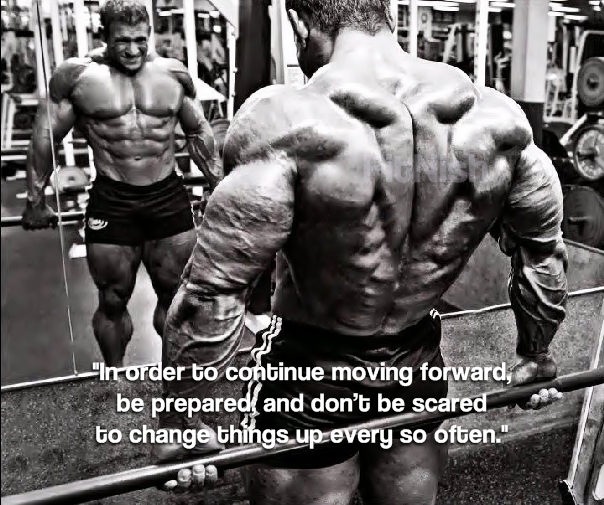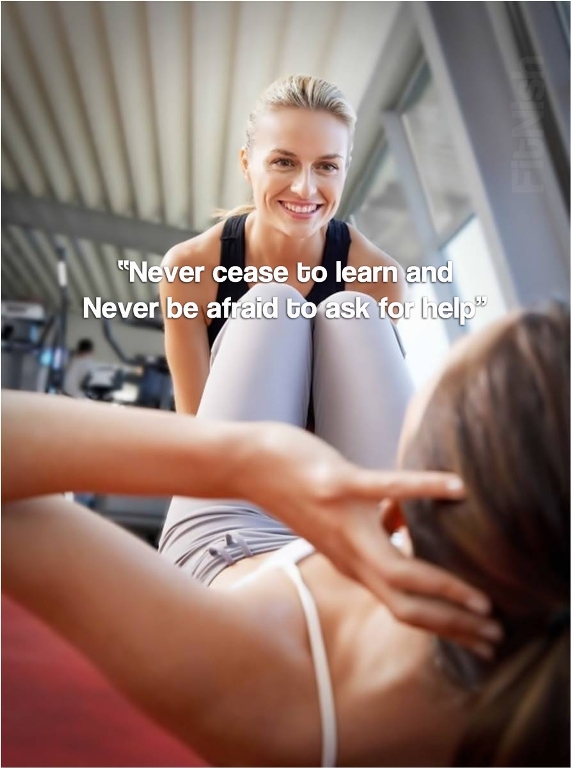
When it comes to setting foot in the gym or commencing any ‘exercise regime’ for that matter, one common predicament that many people find themselves in, is that they do not know where to start or how to go about putting together a decent training programme. This in turn often leads them to delay in starting or even giving up before ever actually beginning. It can seem a daunting task at first, and you may be overwhelmed, especially with all the different information you find on the internet and in magazines these days.
But don’t get disheartened, everything starts with that first step in the right direction.
Here are a few tips to help get you started and keep you motivated to not give up!
1. Research and Keep Learning
Always do you own research and be prepared to constantly keep learning. Although if you are really in doubt about what to do, seek a professionals help, such as a personal trainer. There are many knowledgeable and experienced personal trainers out there who can really give you that boost and give you a lot of first hand information which you can use.
But make sure to continue to do your own research and find out as much as you can so that you are not totally lost when you set foot in a gym.
With that being said, if affordability is your biggest issue here, then you can always hire a personal trainer for a few initialsessions. This will help to get you started and headed in the right direction without becoming too expensive.
2. Build it up
When it comes to cardio training, the worst thing you can do is to jump right in and start cycling or jogging (or whatever you enjoy) for two hours a day, every day of the week.
The best approach to cardio is to build it up. Start small, see what you can handle, and then slowly keep building it up.
For example you can start doing cardio three times a week for 20 minutes at a time. Each week you can then increase the time slightly, adding say, just ten minutes to one session. OR increase the intensity of the sessions by aiming to complete the same distance in less time.
With cardio don’t be fooled, there are many ways to ‘change’ it up to keep it intense and to keep progressing without increasing the duration of it.

3. There is no one size fits all
One thing to understand is that there are so many different ways to train and many people have their ‘own training methods.’ (Just a note, in this article I am talking about training programmes and not ways to perform specific exercises, as the ‘form’ of exercises is a whole different topic.) Thus there is really no one exact and correct way to train.
We are all unique, and react differently to many things, therefore we need to find what works for us.
So another key point to remember is that the body is a highly adaptable machine. It can adapt to pretty much anything and is always looking for stability in order to maintain its equilibrium.
What this means is, if you want to progress; be it lose fat or gain muscle, if you do one thing over and over for a period of time, even though it may have worked initially, eventually your body will get used to it and will stop progressing.
Thus, in order to continue moving forward, be prepared, and don’t be scared to change things up every so often. I’m not saying every workout needs to be different. You need to monitor your progress on a certain training routine and when you start to see that you are not getting stronger or leaner (whatever your goal is) then it could be time for a change.
Even a small change could go a long way. You body needs different stresses placed upon it in order to stimulate it in a different way and allow it to continuously grow.
4. Start with one body part
With weight training, a good and simple way to start is to train at least one big body part per day.
Big body parts are:
- Back
- Legs: Quadriceps and hamstrings
- Chest
Smaller body parts consist of:
- Shoulders
- Traps
- Biceps
- Triceps
- Forearms
- Calves
You can group one big body part with a smaller body part. Bigger muscles usually require more exercises and sets to target them effectively, and to ensure they are worked from every possible angle. So it is a good idea to start your workout with the bigger body part and then move on to the smaller body part(s).
So for example, on:
- Day 1 of your training programme you can group together Chest with Triceps.
- On Day 2 place Back with Biceps.
- Day 3 Shoulders and Traps.
- Day 4 Legs.
- Day 5 Rest.
With this routine you can see we hit each muscle group roughly once per week. This is a good starting point and you can always change the groupings as you require.
Don’t be afraid to try and train each muscle twice a week sometimes, as that can really help some people grow tremendously.

5. There is no perfect programme
There is no perfect way to group your muscles. This tip kind of ties in and follows on from both tips three and four. This may go against most common views out there, but I firmly believe there is no ‘right’ way to group your muscles in a training programme. You can literally try any combination you think and it could work for you.
For example, many people will rather avoid training chest and back on the same day as these are two very big muscles. They say it could be too much to do and you may not recover enough for your next workout.
As long as you are eating adequately and resting enough, it is very difficult to over train the body.
The conclusion here is that by trying something completely different can be just what you need, to blast through that sticking point.
For example there was an article which gave an unorthodox method being to try training a specific muscle on two consecutive days for a few weeks, in order to stimulate new growth. This went against everything I thought I knew. I was very skeptical. How would my muscle recover? Surely I would end up breaking it down far too much and result in it getting smaller? What better way to find out, than to try. I trained my chest for two consecutive days in my workout routine for a few weeks, and sure enough the dramatic change sparked new growth and I saw an immediate difference after a few weeks.
So don’t ever be afraid to try something different, even it goes against the conventional ways. If anything, it will help you learn what works and what doesn’t.
6. Copying the pros workouts
A huge misconception is the idea of taking someone else’s workout, copying it exercise for exercise and set for set, and then expecting the same results of that person. This happens A LOT when people see a famous bodybuilder or even a celebrity who has an amazing physique. The only thing they want to know is what workout he/she does Or what exercises does he/she use?
Then magazines publish these celebrity’s workouts and people think by following their workouts they will attain a body just like their celebrity role model. There are many factors involved in changing and sculpting a body; diet, rest, training, supplements are some of these aspects.
If it really were that easy then most guys would have just followed Arnold Schwarzenegger’s training programme and would have transformed their bodies into his. Granted we could all use their workouts and make improvements to ourselves, but we need to understand that those improvements could be limited. Also if we take a guy like Arnold, who was an established and an experienced bodybuilder, he had tailored his workouts to his needs and they can be seen as pretty advanced; some lasting two to three hours long, twice a day! So if a beginner decides to jump right in and follow his intense routine, they are probably not going to last past an hour.
So yes you can use other people’s routines, but remember it must work for YOU, and thus you may need to change a few things in order for it to suit your needs.

7. Just do it!
At the end of the day doing something, is more often than not, better than doing nothing. So whatever situation you find yourself in, the best way to begin working out, is to simply….Begin.
You may start off unsure and doubtful but as time goes on you will start to learn what works and what doesn’t.
You will learn how you and your body reacts to certain things and that’s how you will progress forward. Also remember to rest well and eat enough!
Experience is such a great teacher, and after all, everyone who ever achieved anything was once a beginner.
It all starts with you and that first step.













